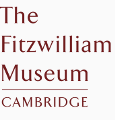
Search help
Regular search
Use a free text query in order to retrive records, these should load up without the page having to refresh, clicking on the image or the "full record" link at the bottom of the card will take you to a details page for that particular record.
Advanced search
Advanced search allows you to perform multiple queries at the same time, based on several criteria, for example you could find all coins containing the word Edward and Redwulf, between a certain time period. All records are presented in chronological order.
Please note the following:
EMC/SCBI numbers:
EMC record numbers are derived from the year in which they were found or recorded, followed by the number in sequence for that year. Thus 2012.0123 is the 123rd coin recorded in 2012.
SCBI record numbers are derived from the numbers assigned in published SCBI volumes. The first two digits of all SCBI records are always 10. Thus 1001.0321 is coin number 321 in SCBI volume 1.
Mapping:
Two forms of map are available based on EMC/SCBI records.
A heatmap visualises concentrations of finds, with greater density producing a higher (brighter) level of ‘heat’. Note that the pattern may shift depending on level of magnification.
A marker map shows points and labels for all locations where relevant coins have been found. Note that some locations are approximate, and some have produced a substantial number of finds. Also, full spatial data on finds held by the project is not released to the public, in order to protect the confidentiality of finders and landowners. Find-spots are normally only divulged to the level of parish. The placement of records within each parish area does not reflect the location of a coin-find.
Find-spots:
Find-spots are given only to parish level. In some instances the name of the parish in which a coin was found may also be restricted, or unknown, in which case only the unitary authority or region of discovery (e.g. 'East-Anglia') is given.
Names of Kings:
Many rulers' names from this period are spelled in various ways. The forms for major figures as used in this database are:
- Æthelberht
- Æthelred
- Æthelstan
- Æthelwulf
- Alfred
- Anlaf (for Olaf)
- Ceolwulf
- Cnut
- Coenwulf
- Ecgberht
- Eric
- Guthfrith
- Jaenberht
- Ragnall
- Redwulf
- Sievert / Siefred
- Sihtric
Names of moneyers
Moneyers were people responsible for minting, who placed their names on coins in the early Middle Ages. They used a multitude of spellings, even for the same individual. For the benefit of analysis, these are generally normalised to a late West Saxon form of Old English, or to the standard form of Old Norse for names of Scandinvaian derivation, as listed in SCBI vols. 28 and 41. These names and their variants are too numerous to list here, but note that Advanced Search offers the option of searching by the name as inscribed on the coin.
Type
Names of types used in the database are listed in roughly chronological order. Early English gold coins follow C. H. V. Sutherland, Anglo-Saxon Gold Coinage in the Light of the Cronall Hoard (Oxford, 1948); early silver pennies follow D. M. Metcalf, Thrymsas and Sceattas in the Ashmolean Museum, Oxford, 3 vols. (London, 1993-4); and subsequent coins follow J. J. North, English Hammered Coinage, vol. I: Early Anglo-Saxon to Henry III, c. AD 600-1272, 3rd ed. (London, 1994).